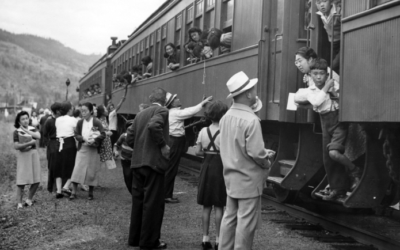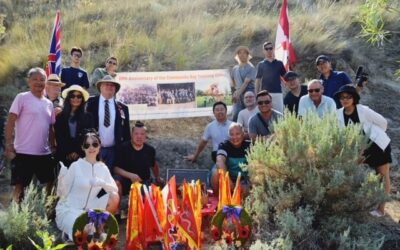One of Kelowna’s primary links to D-Day, June 6, 1944, is through the service career of Rodney Frederick Leopold Keller (1900-1954). [See Friendly Fire from Above at okanaganmilitarymuseum.ca for more about General Keller]
Major General R.F.L. Keller CBE [Fig. 1] used two personal weapons while commanding the 3rd Canadian Infantry Division during operations from D-Day to Mid-August of 1944.1 The Okanagan Military Museum has recently acquired his handgun and carbine rifle.
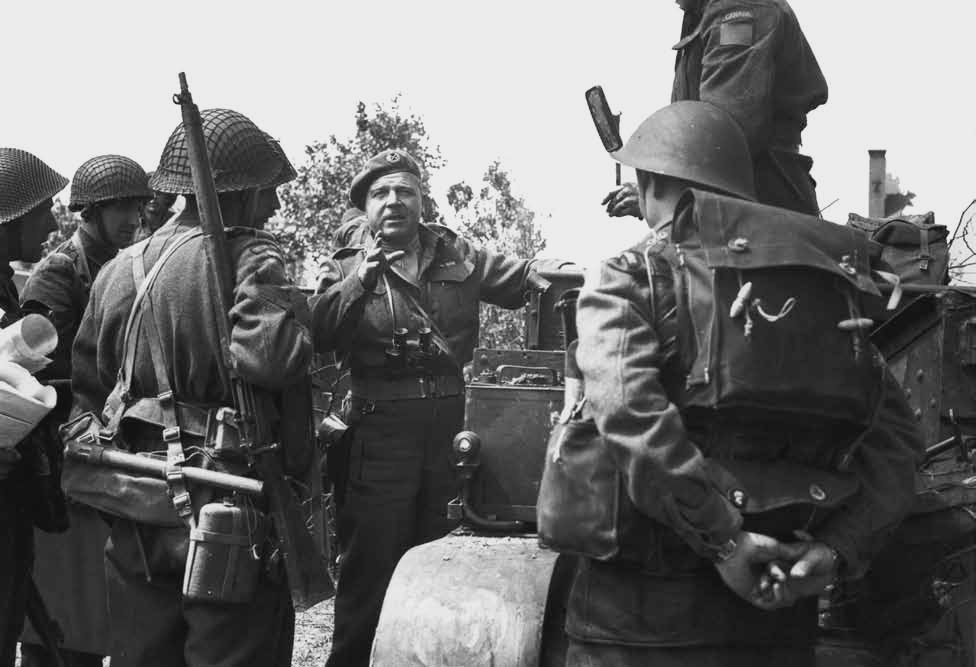
LAC PA115544
His Colt Automatic Calibre 45 Government Model M19112 has a commercial contract serial number C 29743, and 1897, 1902, 1905, 1911 and 1913 patent marks on the left side of the slide [Fig. 2].
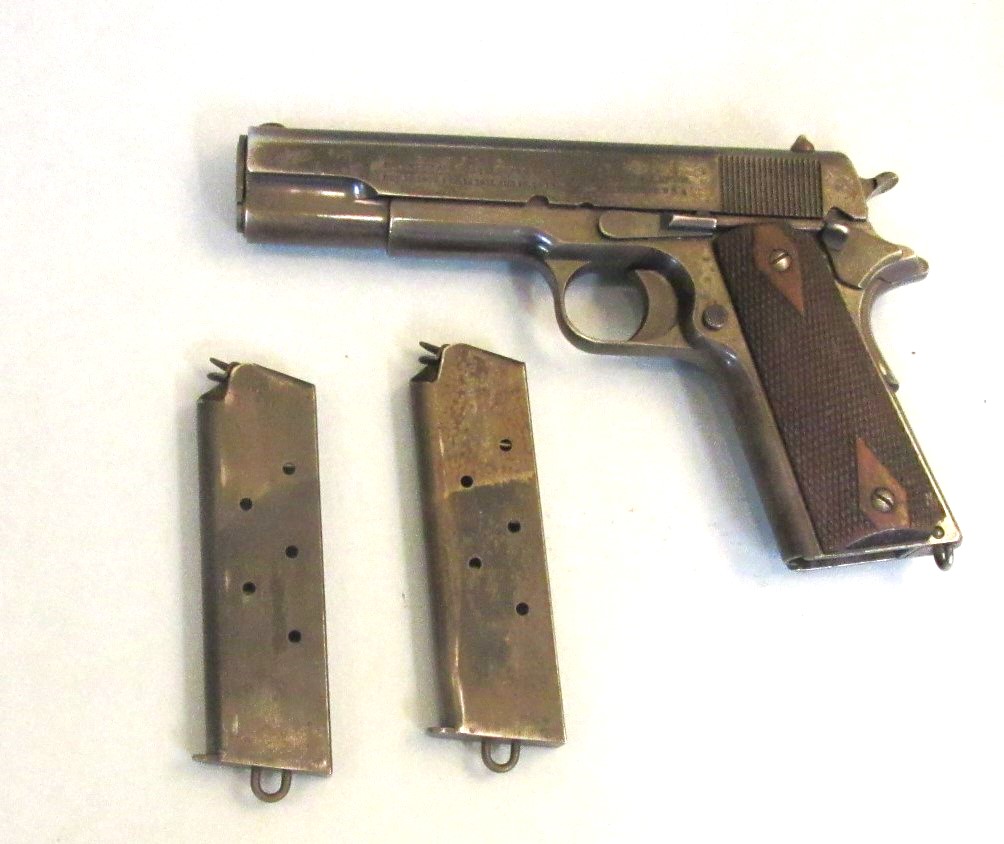
2023.043.002
These markings, along with the lanyard loops on the magazines, indicates that it was made for the Canadian Army for purchase by officers of the Canadian Expeditionary Force as their personal side arm in France during the First World War.2
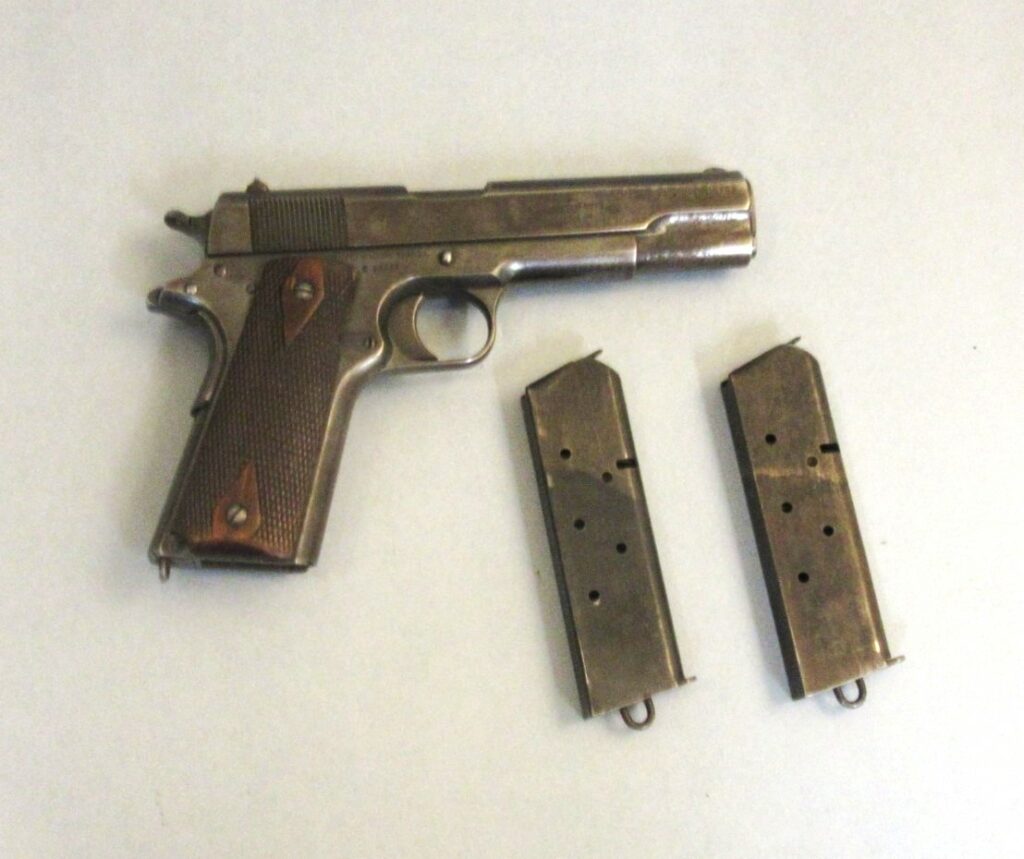
2023.043.002
Etched on the right side of the slide is the name H. Kennedy Can Engrs. [Fig. 3]. A search of Library and Archives Canada’s CEF service files indicates that it may have been owned by one of three officers in the Canadian Engineers during the First World War. Temporary/Honorable Captain paymaster Harry Cron KENNEDY might have carried the gun while circulating around the frontlines with the payroll. Two others were awarded the Military Cross (MC). Captain Harold Samuel KENNEDY MC was awarded the MC on the King’s birthday list. Lieutenant Howard KENNEDY MC earned his MC in the field: “For conspicuous gallantry and devotion to duty in repairing a track [narrow-gauge tramway] in spite of a very heavy barrage, which broke the track afresh in many places. The work took six hours to complete, during which he was twice blown up by a shell and partially buried.”3
When or how Maj-Gen. Keller acquired it is unknown. However, Keller was a Royal Military College-Canada graduate in 1920 and a Regular Canadian Army Colonel in England in June 1941.
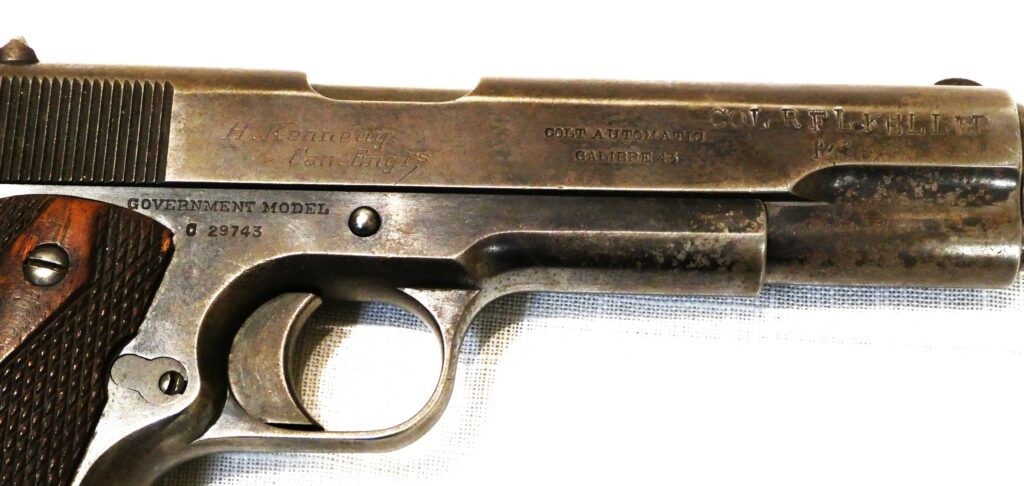
2023.043.002
Maj. Gen. Keller acquired the M1 privately for his own use as he supervised his division’s deployment in battle in Normandy. There are no Canadian government acceptance marks nor is it named to Keller.
As a compact personal defence weapon the .30 Calibre US M1 Carbine had several advantages over the standard issued handguns, the Sten and Thompson submachine guns, and the Lee-Enfield rifle. The .30 calibre bullet was heavier than the 9mm used by the Sten; the cartridge had more gunpowder than the .45 calibre round of the Thompson submachine gun; and the gun was shorter, lighter, and faster firing than a .303 in. Lee-Enfield No. 4 rifle.
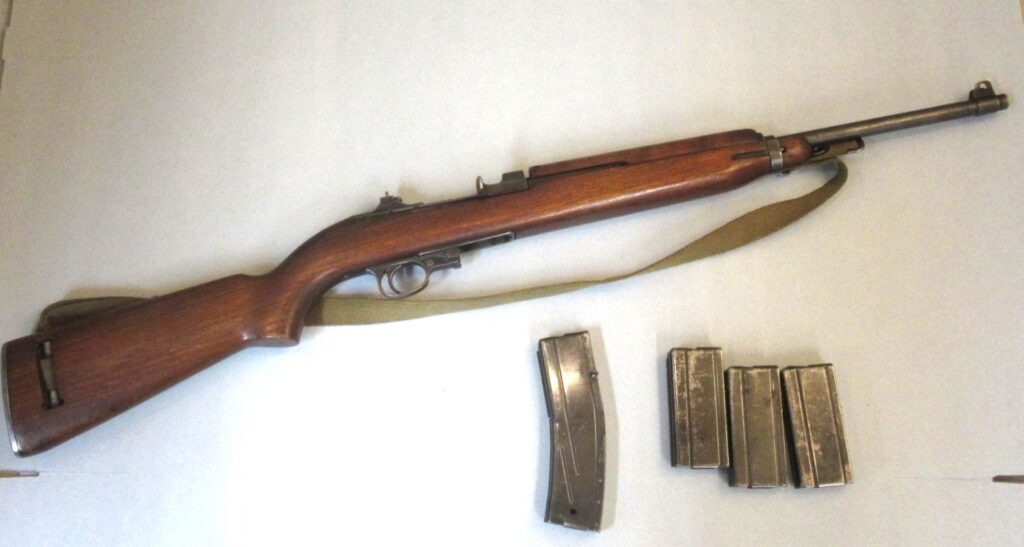
2023.043.001
Made by Inland Division of General Motors, the semi-automatic was not considered a submachine gun nor a rifle on par with longer, standard issued rifles.4 The oil bottle and brush was stored in the shoulder stock around which the shoulder strap was fastened. Later versions had a bayonet mount installed late in the war. The magazines, especially the 30 rounds, [Fig. 4, 5] were known to cause misfeeds of ammunition into the chamber. While the M1911 handgun and the Thompson submachine gun Canadians used in Italy fired the same .45 Calibre cartridge, the M1’s were incompatible with other .30 Calibre ammunition the Americans used.
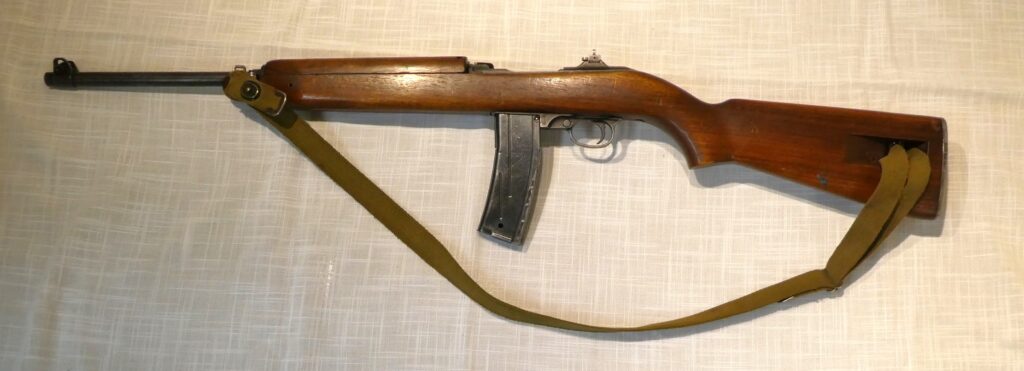
2023.043.002
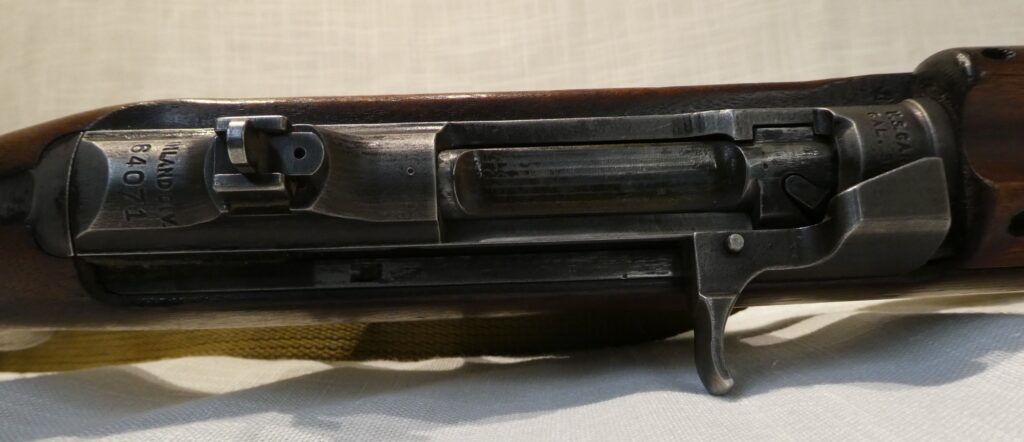
2023.043.001
Apart from usage with the joint USA-Canadian 1st Special Service Force, aka the “Devil’s Brigade,” and the Canadian troops deployed to the Aleutian Islands in defence of Alaska, the M1 Carbine was not a Canadian Army issued weapon. Typically, American troops employed as drivers, clerks, dispatch riders, and other support trades not in direct contact with the enemy carried the Carbine [Fig. 6].
Major-General Rodney Frederick Leopold Keller was awarded the Commander, Order of the Empire by the King in July 1945 just weeks before being injured in an accidental bombing of his headquarters by the 8th US Army Air Force on August 8, 1944. He was invalided back to Canada and retired from the Canadian Army. He returned to Normandy for the 10th anniversary of D-Day in 1954 only to die of a heart attack in France. Major General Keller is buried at the Kelowna Memorial Park Cemetery, with full military honours.
References:
1] The D-Day Encyclopedia, Editors DG Chandler and JL Collins Jr, Simon and Schuster, New York, NY 1994, pgs.328,9; Kelowna Courier June 24, 1954, pg.8 part 2 [BCRDH] accessed 2023-05-02
https://en.wikipedia.org/wiki/M1911_pistol
2] Canadian Military Handguns 1855-1985, Clive M. Law, Museum Restoration Service, 1994; pgs. 31, 32, 51, 52
3] The Military Cross awarded to members of the Canadian Expeditionary Force 1915-1921, by DK Riddle and DG Mitchell, The Kirby-Marlton Press, Winnipeg, Mb, 199; pg. 169 [LG 06/03/18 07/06/18, p.7]
4] https://en.wikipedia.org/wiki/M1_carbine; see also Jane’s Guns Recognition Guide, Harper Collins Publishers, 1996; pg. 408

